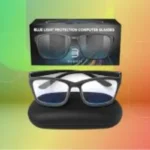A Definitive Guide to Buying the Best Soccer Shoes
If you are an all-star on the pitch, you should understand the importance of soccer shoes or cleats that fulfill your needs. A quality pair of soccer shoes or cleats will impart traction on the field as you run. The right shoes also protect your feet from repeated impact while helping you remain comfortable, so that you can focus on scoring the next goal.
Soccer shoes are hands-down the most important accessories for any soccer player. Therefore, it is important to get the right cleats throughout the entire season while being comfortable for the many miles you run every match. It can be difficult to find the right cleat with so many options available.

Types of Soccer Cleats
Understanding the type of field you play on is the first step to finding the right soccer shoes. Different playing surfaces will require different types of shoes to help you play the best while being safe. Here are the common types of fields and the shoes that function best on them:
- Firm Ground for Natural Grass: If you are playing on natural grass, you would need the “classic soccer cleat.” This is known as the firm ground soccer cleat or the molded cleats. Typically, they feature a series of non-removable PU/TPU or rubber studs. These canonical or bladed studs offer maximum stability and traction on natural grass fields.
- Soft Ground for Muddy or Wet Grass: These are similar to firm ground shoes. The only exception is that the soft ground shoes feature longer studs for better traction on wet fields. Usually, soft ground cleats feature detachable or metal-tipped studs. Therefore, these are known as “metal soccer cleats.” There is a possibility to customize the removable studs for different field types.
- Artificial Grass for Grass Turf: Leading brands are designing soccer shoes with hybrid firm ground or multi-ground outsoles. The main difference between artificial grass cleats and firm ground cleats is that the former features shorter & circular studs. Nowadays, hybrid and multi-ground artificial grass soccer shoes feature these circular studs along with bladed studs to deliver ample stability.

Understanding the Parts of a Soccer Cleat
Before you look into specific characteristics of different cleats, you should understand different parts of the shoes as well. When you understand the anatomy of the soccer cleats, you will be able to make more informed decisions while choosing the right footwear. Every part of the cleat aims to serve a particular purpose and contribute to the overall comfort & performance.
- Heel Counter: It refers to the stiff insert in the heel area offering support and maintaining the shape of feet.
- Vamp: It is the front portion of the upper, also known as the strike zone. This is because this portion makes direct contact with the ball. You can come across knitted, stitched, or additional technologies to improve ball control.
- Tongue: It is the strip of the material running along the foot’s top, right under the laces. This part offers protection to the foot from lace pressure while affecting the fit and comfort.
- Studs: These are the protrusions on the sides that offer traction. Their arrangement, shape, and size tend to vary depending on the type of surface on which you are playing the game.
- Outsole: It is the bottom-most layer of the shoe that comes in contact with the ground. In soccer shoes, the outsole is the same as the soleplate.
- Toe Box: It represents the shoe’s front part housing the toes. The size and shape of the toe box tend to affect overall comfort.
- Soleplate: It is the shoe’s bottom part to which studs are attached. It helps in delivering structure while affecting the shoe’s stiffness.
- Insole: It is an attached or removable cushioning present inside the shoe beneath the foot. It is also referred to as the sock liner. It helps in delivering comfort throughout.
What Features to Look Out for?
When you wish to purchase the best soccer shoes for your game, here are some features you should consider:
- Fit: If possible, try on the cleats beforehand. The cleats you purchase should fit snugly while reducing the potential of any injury. One portion of the shoes that affect the overall fit is the collar, based on the height. Some players have a collar as it delivers ample compression. Some of the common types of collars out there are:
- Low-cut Collars: These are conventional models with a cut low, just across the ankle bone. These deliver maximum rotational freedom.
- Mid-cut Collars: These are located just below the ankle bone.
- High-cut Collars: These go beyond the ankle bone.
- Material: This is another feature that will impact your overall performance on the field. Here are some materials to consider:
- Kangaroo Leather: It is a high-quality material designed with comfort in mind. Kangaroo leather is typically used to design top-tier soccer cleats. It delivers the best fit possible, extremely soft with a padded base and ample protection.
- Calfskin Leather: This is another durable and protective material. This material offers ample protection as players fight for the ball. It is not as soft as Kangaroo leather. Still, it is considered as more durable.
- Knit: It represents a form-fitting material that fits like a sock. It has lately become one of the most popular materials for soccer cleats. A knit upper feels like a sock, form-fitting and comfortable. The downside of this material is that any uncoated or exposed knit surface will dirt easily and absorb moisture.
- Synthetic: It is a lightweight material and performs well in all weather conditions. Synthetic uppers deliver an extremely close fit with minimal break-in required. They keep the shoes lightweight and deliver excellent performance in all weather conditions.
Conclusion
When you are looking for the perfect pair of soccer shoes or cleats, you need to consider more than just the aesthetics. You should also aim to improve your performance, confidence, and comfort on the field. It is important to understand that the best soccer shoes are those that fit perfectly and support your style of play.







